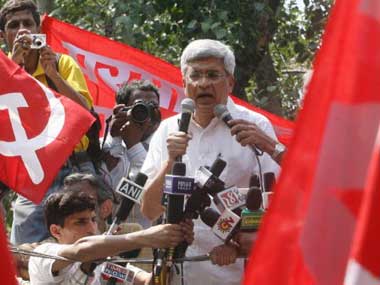The thirty eight flight of ISRO’s workhorse rocket, PSLV-C36 is scheduled for a December 7 launch from the First Launch Pad (FLP), at Satish Dhawan Space Centre SHAR, Sriharikota. The XL configuration will be used for the mission, where the PSLV is strapped on with six additional motors. PSLV-C36 will place the ResourceSat-2A into 917 kilometre high polar Sun Synchronous Orbit (SSO). [caption id=“attachment_351216” align=“aligncenter” width=“640”]  From left to right, PSLV-C36 second stage at Stage Processing Facility, Launch vehicle integration personnel working on PSLV-C36 core stage inside Mobile Service Tower, and Hoisting of PSLV-C36 second stage during vehicle integration. Image: ISRO[/caption] The ResourceSat-2A is a remote sensing satellite meant to monitor resources. ResourceSat-2A is a follow on mission to the ResourceSat launched in 2003 and the ResourceSat-2 launched in 2011. The remote sensing data services is provided to a users around the world. [caption id=“attachment_351217” align=“aligncenter” width=“640”]  Hoisting of a segment of PSLV-C36 core stage during vehicle integration of PSLV-C36 core stage. Image: ISRO.[/caption] There are three remote sensing payloads on board the ResourceSat-2A. The Linear Imaging Self Scanner (LISS-4) high resolution camera operating in three spectral bands in the Visible and Near Infrared Region (VNIR). The resolution of the camera is 5.8 metres. The LISS-4 camera has a swath of 74 kilometres and revisit every five days. The swatch is the area on the ground under observation, and the revisit period is the duration after which the same spot on the ground is observed by the imaging instrument. [caption id=“attachment_351223” align=“aligncenter” width=“640”]  RESOURCESAT-2A in a clean room following its removal from the container. Image: ISRO.[/caption] A second payload is the LISS-3 camera with an image resolution of 23.5 metres. The LISS-3 captures images in three spectral bands in the VNIR, as well as one spectral band in the Short Wave Infrared Region (SWIR). The LISS-3 has a swath of 141 kilometres and a revisit of 24 days. The third payload is the Advanced Wide Field Sensor (AWIFS) camera operating in three bands in VNIR and one band in SWIR. The spatial resolution on this camera is relatively low, at only 56 metres. The swatch of the AWIFS payload is 740 kilometres, and has a revisit of 5 days. The data rates for all the payloads are 105 MBps. [caption id=“attachment_351224” align=“aligncenter” width=“640”]  RESOURCESAT-2A with one of its solar arrays deployed during ground tests8 of 13. Image : ISRO.[/caption] On board are two solid state recorders with a storage capacity of 200 Giga Bits each. The Recorders are meant to store images from the sensors, to beam to the ground stations later. There are four stages to the rocket. The separation of the satellite will happen eighteen minutes after the launch. The rocket will achieve a top speed of 7,439 metres per second. [caption id=“attachment_351225” align=“aligncenter” width=“640”]  RESOURCESAT-2A with one of its solar arrays deployed during ground tests8 of 13. Image: ISRO.[/caption] The PSLV has seen thirty six successful launches so far, and has been putting satellites into orbit since 1994, and is available to foreign countries and corporations for launches. Out of the 121 satellites launched by PSLV, 79 are foreign satellites, and 42 are Indian satellites. PSLV has placed satellites in polar SSOs, Low Earth Orbits (LEO), Geosynchronous Transfer Orbit (GTO) as well as Sub GTOs.
The thirty eight flight of ISRO’s PSLV-C36 is scheduled for a Dec 7 launch from the First Launch Pad (FLP), at Satish Dhawan Space Centre SHAR, Sriharikota.
Advertisement
End of Article


)
)
)
)
)
)
)
)
)



